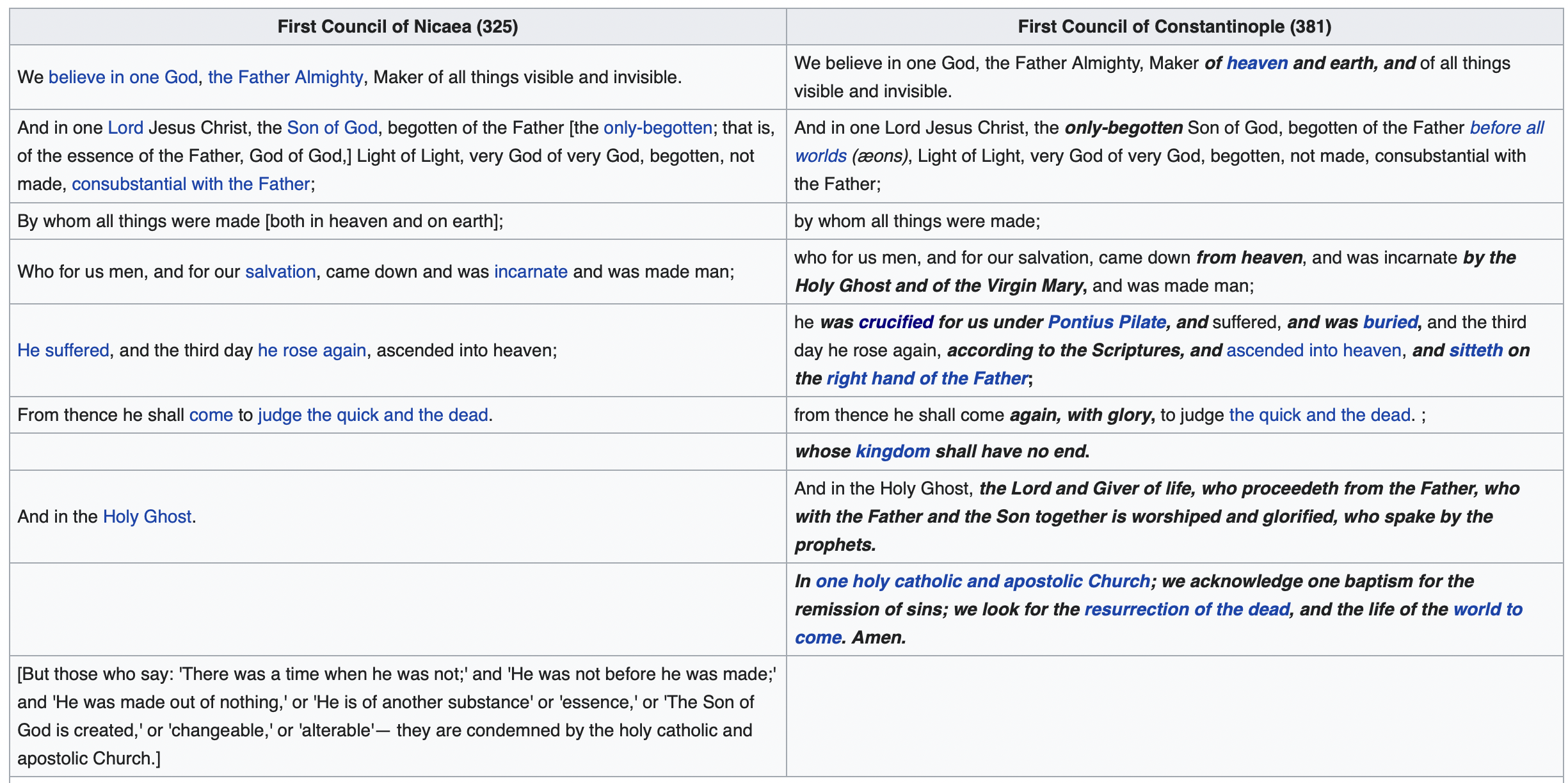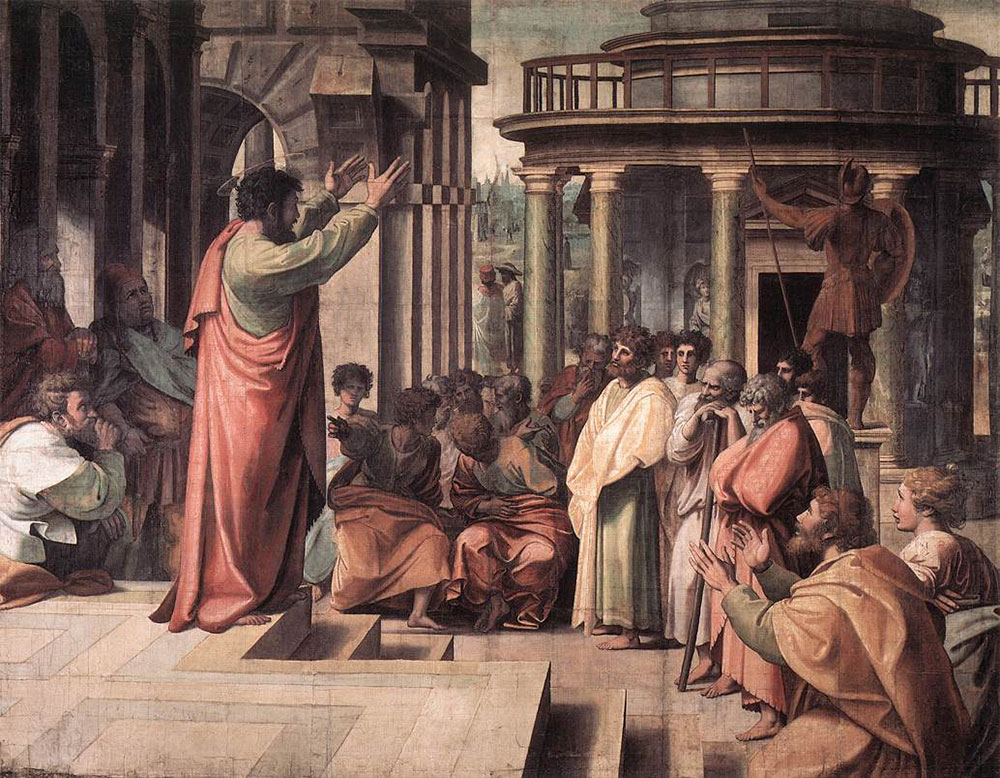Church Councils
The 8th Church Councils
1. Council of Jerusalem 50 A.D
It was held by the Apostles of Jesus Christ.
The argument of the Jews was that the gentiles must keep the law for salvation and Church disputed it by being anointed by the HolySpirit to lay no burden other than abstaining from blood, sexual immorality and idols.
2. Council of Nicaea 325 A.D
There was an issue in Church of Alexandria on the nature of the Son that he was created and not divine
The Arians appealed to Scripture, quoting biblical statements such as “the Father is greater than I” (John 14:28), and also that the Son is “firstborn of all creation” (Colossians 1:15).
The argument was resolved in this council by declaring Jesus is Fully God and Fully Man
The opposing view stemmed from the idea that begetting the Son is itself in the nature of the Father, which is eternal. Thus, the Father was always a Father, and both Father and Son existed always together, eternally, coequally and consubstantially. The contra-Arian argument thus stated that the Logos was “eternally begotten”, therefore with no beginning. Those in opposition to Arius believed that to follow the Arian view destroyed the unity of the Godhead, and made the Son unequal to the Father. They insisted that such a view was in contravention of such Scriptures as “I and the Father are one” (John 10:30) and “the Word was God” (John 1:1), as such verses were interpreted. They declared, as did Athanasius, that the Son had no beginning, but had an “eternal derivation” from the Father, and therefore was coeternal with him, and equal to God in all aspects
3. Council of Constantinople 381 A.D.
In 337 and the accession of his Arian-leaning son Constantius II, open discussion of replacing the Nicene creed itself began. Up until about 360, theological debates mainly dealt with the divinity of the Son, the second person of the Trinity.
However, because the Council of Nicaea had not clarified the divinity of the Holy Spirit, the third person of the Trinity, it became a topic of debate. The Macedonians denied the divinity of the Holy Spirit. This was also known as Pneumatomachianism.
Thirty-six Pneumatomachians arrived but were denied admission to the council when they refused to accept the Nicene creed.
Apollinarism, argues that Jesus had a normal human body but a divine mind instead of a regular human soul.
Arianism, the nature of the Son that he was created and not divin.
Both were condemned in this council as heretics.
The Summary of the second and third council:
4. Council of Ephesus 431 A.D.
The Council of Ephesus was a council of Christian bishops convened in Ephesus (near present-day Selçuk in Turkey) in AD 431 by the Roman Emperor Theodosius II. This third ecumenical council, an effort to attain consensus in the church through an assembly representing all of Christendom, confirmed the original Nicene Creed, and condemned the teachings of Nestorius, Patriarch of Constantinople, who held that the Virgin Mary may be called the Christotokos, “Christ-bearer” but not the Theotokos, “God-bearer”. It met in June and July 431 at the Church of Mary in Ephesus in Anatolia.
The Council denounced Nestorius’ teaching as erroneous and decreed that Jesus was one person (hypostasis), and not two separate persons, yet possessing both a human and divine nature. The Virgin Mary was to be called Theotokos a Greek word that means “God-bearer” (the one who gave birth to God).
The Council declared it “unlawful for any man to bring forward, or to write, or to compose a different (ἑτέραν) Faith as a rival to that established by the holy Fathers assembled with the Holy Ghost in Nicæa”. It quoted the Nicene Creed as adopted by the First Council of Nicaea in 325, not as added to and modified by the First Council of Constantinople in 381
5. The Council of Chalcedon 451 A.D
The council was attended by 520 bishops and held to re-assert the council of Nicea and Condemned heretics such as of of Eutyches and Nestorius:
The Confession of Chalcedon provides a clear statement on the two natures of Christ, human and divine
We, then, following the holy Fathers, all with one consent, teach people to confess one and the same Son, our Lord Jesus Christ, the same perfect in Godhead and also perfect in manhood; truly God and truly man, of a reasonable [rational] soul and body; consubstantial [co-essential] with the Father according to the Godhead, and consubstantial with us according to the Manhood; in all things like unto us, without sin; begotten before all ages of the Father according to the Godhead, and in these latter days, for us and for our salvation, born of the Virgin Mary, the Mother of God, according to the Manhood; one and the same Christ, Son, Lord, only begotten, to be acknowledged in two natures, inconfusedly, unchangeably, indivisibly, inseparably; (ἐν δύο φύσεσιν ἀσυγχύτως, ἀτρέπτως, ἀδιαιρέτως, ἀχωρίστως – in duabus naturis inconfuse, immutabiliter, indivise, inseparabiliter) the distinction of natures being by no means taken away by the union, but rather the property of each nature being preserved, and concurring in one Person (prosopon) and one Subsistence (hypostasis), not parted or divided into two persons, but one and the same Son, and only begotten God (μονογενῆ Θεόν), the Word, the Lord Jesus Christ; as the prophets from the beginning [have declared] concerning Him, and the Lord Jesus Christ Himself has taught us, and the Creed of the holy Fathers has handed down to us.
6. Second Council of Constantinople 553 A.D.
This council was held to conform the validity of the four proceeding councils and The Great Church further explained the Christological question of the natures of the one person Jesus Christ not contained in the chalcedonies formula
The second Constantinople confirmed:
- One consubstantial trinity. one Godhead to be worshiped in three persons.
- The Word of God had two births, one from the father from eternity and one in time from the blessed Virgin Mary.
- The Word of God (Second Person in Trinity) Truly endured suffering in the flesh
- The Word of God is united to the flesh fully animated by a living, rational, human soul
7. Third Council of Constantinople 680 A.D.
The leading cause behind this council was to resolve of the question whether Jesus Has one energy and that is Monothelitism.
The church condemned that already and says Christ is one persons two wills one is divine will and one human will
8. Second Council of Nicaea 754 A.D.
The church got together and defended the condemnation of the Icons and iconography and because we are under grace not law of the old covnenat.
The council issued a declaration of faith concerning the veneration of holy images It was determined that:
As the sacred and life-giving cross is everywhere set up as a symbol, so also should the images of Jesus Christ, the Virgin Mary, the holy angels, as well as those of the saints and other pious and holy men be embodied in the manufacture of sacred vessels, tapestries, vestments, etc., and exhibited on the walls of churches, in the homes, and in all conspicuous places, by the roadside and everywhere, to be revered by all who might see them. For the more they are contemplated, the more they move to fervent memory of their prototypes. Therefore, it is proper to accord to them a fervent and reverent veneration, not, however, the veritable adoration which, according to our faith, belongs to the Divine Being alone – for the honor accorded to the image passes over to its prototype, and whoever venerate the image venerate in it the reality of what is there represented.
Peace of Christ be with you
In Christ
Mustafa
